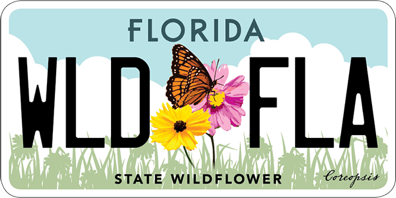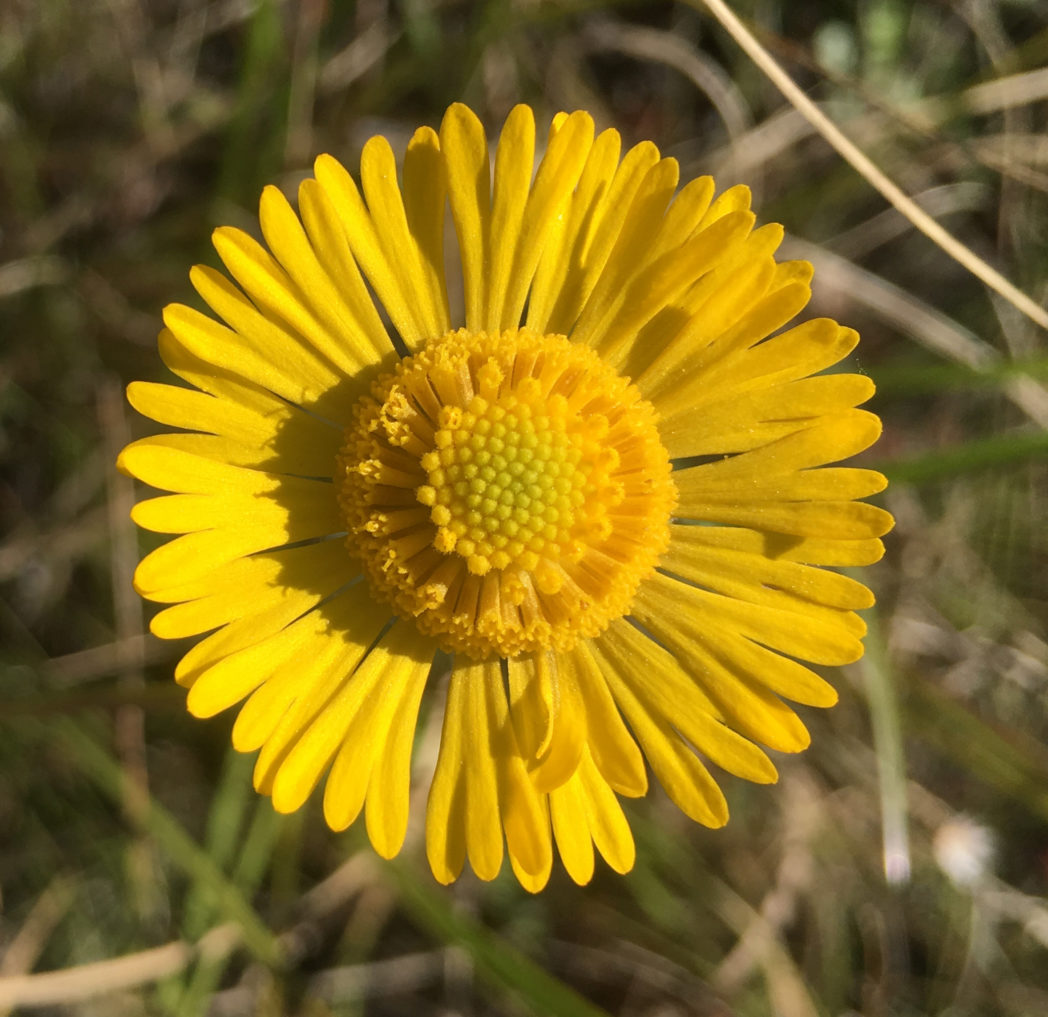Southeastern sneezeweed
Pictured above: Southeastern sneezeweed (Helenium pinnatifidum) by Stacey Matrazzo. Click on terms for botanical definitions. View post as a PDF.
Southeastern sneezeweed (Helenium pinnatifidum) is an herbaceous perennial with delightful sunny blooms. Flowers are solitary and comprised of a broad and dense cluster of yellow disk florets surrounded by many bright yellow ray florets, each with three lobes or notches. Flowers are 2–3 inches in diameter. Stems are erect, unbranched and may be pubescent or glabrous. They arise from a basal rosette of leaves that may have entire or slightly toothed margins. Stem leaves are sessile, alternately arranged and become reduced as they ascend the stem. Seeds are borne in brown, hairy achenes.
Flowers typically bloom in spring, but may bloom year-round. They occur naturally in wet flatwoods and roadside ditches, and along marsh and swamp edges throughout Florida.
Don’t let the name fool you — sneezeweed does not refer to the biological reaction one might have to smelling it. Rather, it is a reference to the plant’s historic use. Native Americans were known to dry and grind into a powder certain species of Helenium and use it as snuff.
Family: Asteraceae (Aster, composite or daisy family)
Native range: Nearly throughout
To see where natural populations of Southeastern sneezeweed have been vouchered, visit florida.plantatlas.usf.edu.
Hardiness: Zones 8A–10B
Soil: Moist to wet soils
Exposure: Full sun
Growth habit: 1–3’ tall
Propagation: Seed, division
Garden tips: Southeastern sneezeweed is a wetland plant that will only thrive in moist soil. It is not drought tolerant. When planted en masse, it puts on a dazzling spring display.
Southeastern sneezeweed plants are occasionally available from nurseries that specialize in Florida native plants. Visit www.plantrealflorida.org to find a nursery in your area.
For more information on other Helenium species, see:

